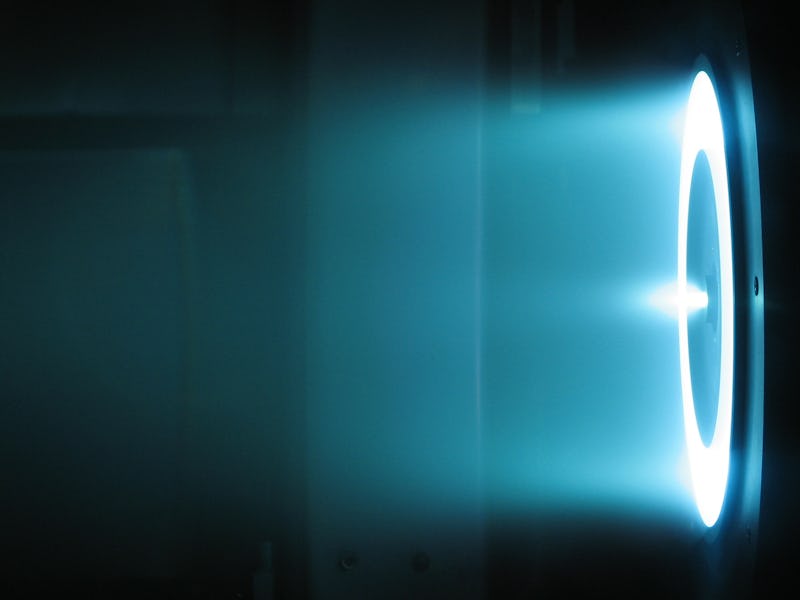NASA Engineers Envision 3-Day Trip to Mars Using Photonic Laser Rockets
The answer to every problem is lasers.

To get humans to Mars, which NASA aims to do within the next couple of decades, the agency will need the right kind of propulsion technology. Right now, NASA is mostly looking to improve existing technology that will be capable of getting a spacecraft to Mars fast enough. Unfortunately, any astronauts en route to the red planet are still looking at a six-to-12 month travel time. That timeframe necessitates the creation of a craft that can hold resources — air, water, food, fuel, and much more — to sustain a crew for at least one and preferably both legs of the journey.
Is there another way? Maybe. NASA is currently working on several different types of spacecraft propulsion methods. According to a new video released by the agency, one of those is based on photonic lasers capable of sending a lightweight, 100-kilogram spacecraft to Mars in just three days time. A crewed spacecraft would itself need to endure only about a 30-day travel.
Current propulsion methods rely on chemical acceleration — burning finite fuels in order make the thrusters fire. Unfortunately, fuels require space and, almost more critically, weight. Also, chemical acceleration has physical limitations.
The laser method, by contrast, utilizes electromagnetic acceleration — essentially using a very intense light source (i.e., photonics) to push the spacecraft forward. The technology has a much bigger power ceiling — meaning we could push a spacecraft faster through space — and doesn’t require the space and weight considerations of fuel.
There’s one big drawback: This type of system is incredibly complicated and incredibly expensive to build. You need equipment and instruments like superconducting magnets used in particle accelerators to make this work. Many experts already doubt NASA will have the funds to pull off a Mars trip using existing technology — and if that’s true, they’ll have no hope of getting a spacecraft to work using laser propulsion.
So NASA wants to work now to make this kind of propulsion cost-effective and scaled for a compact space vessel. Whether they’ll actually succeed is unclear — this isn’t the first time someone has proposed making spaceships move via lasers, and we’re years away from testing.
Moreover, it’s just one of several ways NASA could get a spacecraft to Mars or through interstellar space with less difficulty. Many aerospace engineers think water (which there is tons of in space!) could make for a fantastic spacecraft propellent — either by itself, or as part of a hydrogen-based system. And there’s also the notion of establishing resupply and refueling facilities on the moon or cis-lunar space to allow Mars-bound crews to carry less up to a certain point.